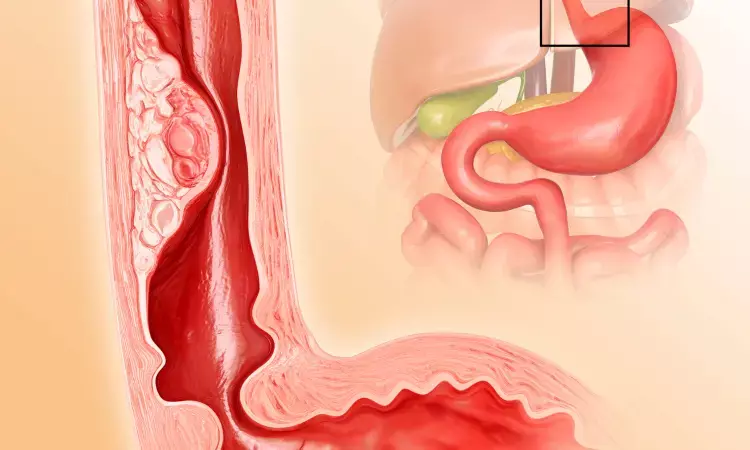- Home
- Medical news & Guidelines
- Anesthesiology
- Cardiology and CTVS
- Critical Care
- Dentistry
- Dermatology
- Diabetes and Endocrinology
- ENT
- Gastroenterology
- Medicine
- Nephrology
- Neurology
- Obstretics-Gynaecology
- Oncology
- Ophthalmology
- Orthopaedics
- Pediatrics-Neonatology
- Psychiatry
- Pulmonology
- Radiology
- Surgery
- Urology
- Laboratory Medicine
- Diet
- Nursing
- Paramedical
- Physiotherapy
- Health news
- Fact Check
- Bone Health Fact Check
- Brain Health Fact Check
- Cancer Related Fact Check
- Child Care Fact Check
- Dental and oral health fact check
- Diabetes and metabolic health fact check
- Diet and Nutrition Fact Check
- Eye and ENT Care Fact Check
- Fitness fact check
- Gut health fact check
- Heart health fact check
- Kidney health fact check
- Medical education fact check
- Men's health fact check
- Respiratory fact check
- Skin and hair care fact check
- Vaccine and Immunization fact check
- Women's health fact check
- AYUSH
- State News
- Andaman and Nicobar Islands
- Andhra Pradesh
- Arunachal Pradesh
- Assam
- Bihar
- Chandigarh
- Chattisgarh
- Dadra and Nagar Haveli
- Daman and Diu
- Delhi
- Goa
- Gujarat
- Haryana
- Himachal Pradesh
- Jammu & Kashmir
- Jharkhand
- Karnataka
- Kerala
- Ladakh
- Lakshadweep
- Madhya Pradesh
- Maharashtra
- Manipur
- Meghalaya
- Mizoram
- Nagaland
- Odisha
- Puducherry
- Punjab
- Rajasthan
- Sikkim
- Tamil Nadu
- Telangana
- Tripura
- Uttar Pradesh
- Uttrakhand
- West Bengal
- Medical Education
- Industry
Revisional surgery for Gastro-Oesophageal Reflux Disease after One Anastomosis Gastric Bypass rare

UK: A systematic review published in Obesity Surgery has concluded that the revisional surgery for Gastro-Oesophageal Reflux Disease (GORD) after One Anastomosis Gastric Bypass (OAGB) is rare, and the most common choice is conversion to Roux-en-Y configuration, in case of revisional requirement.
Bile is physiologically present in the stomach and may result in biliary gastritis (symptomatic), which can be treated like acid-related gastritis and reflux. Approximately 1.0 % of patients undergoing OAGB suffer from GORD, which requires surgical correction.
As said by Kamal Kumar Mahawar in the Letter to Editor, published in Obesity Surgery, 2016," the longest possible pouch that can be carved out of the patient's stomach without compromising the outlet of the bypassed segment minimizes symptomatic gastro-oesophageal bile reflux while a narrow pouch due to less acid-secreting capacity could reduce GORD incidence."
Anti-reflux technique for OAGB performance makes gastro-oesophageal biliary reflux 'highly improbable,' but the pros and cons remain unexamined and unproven. To aid in revising OAGB for persistent GORD symptoms, scientific literature mentions little evidence. As performed by Facchiano and colleagues, conversion to the Roux-enY configuration leaves the original gastrojejunostomy intact and is proposed to be an appropriate option.
Gastroesophageal reflux disease (GERD) and malnutrition remain the primary reason for revisional surgery post-OAGB. The GERD rate after OAGB ranges from 3 to 8%, as mentioned in the literature.
The leading causes mentioned in the literature are related to bile origin and its role in the genesis of gastritis, esophagitis, anastomotic ulcer, and gastric and esophageal cancer. The absence of an anatomical barrier at the gastrojejunal junction may allow bile passage into the gastric pouch, which promotes gastritis and marginal ulcer.
Considering the points mentioned above from the literature and adding relevant data, a systematic review was conducted by a team of researchers led by Dr. Rachel Xue Ning Lee from the East Midlands Bariatric and Metabolic Institute of University Hospitals of Derby and Burton NHS Foundation Trust, Derby, UK to review the current literature on revisional surgery after OAGB for GORD as this remains the biggest concern.
The key points from the study are:
• The databases searched were MEDLINE, EMBASE, and PubMed.
• Twenty-one studies were identified, appraising 13,658 OAGB patients.
• Two hundred thirty patients constituting 1.6 %, underwent revisional surgery for GORD.
• In 211 patients constituting 91.7 %, revision to the Roux-en-Y configuration was performed.
• Six patients constituting 2.6 %, had a Braun entero-enterostomy added to the OAGB.
• Thirteen (5.6%) patients underwent ESF. (Excluded Stomach Fundoplication).
• In 112 patients constituting 48.6 %, Reflux symptoms were resolved, and it persisted in 13 (5.6%) patients.
• Reflux symptoms were not reported in 105 (45.6%) patients.
The researcher wrote, "We reviewed the current literature on revisional surgery after OAGB for GORD."
They mentioned that Revisional surgery after OAGB for GORD is rare, and if required, the most common choice is conversion to Roux-en-Y configuration.
Further reading:
Mahawar, K.K. Gastro-Oesophageal Reflux Disease After One Anastomosis (Mini) Gastric Bypass. OBES SURG 26, 1592–1593 (2016)
BDS, MDS in Periodontics and Implantology
Dr. Aditi Yadav is a BDS, MDS in Periodontics and Implantology. She has a clinical experience of 5 years as a laser dental surgeon. She also has a Diploma in clinical research and pharmacovigilance and is a Certified data scientist. She is currently working as a content developer in e-health services. Dr. Yadav has a keen interest in Medical Journalism and is actively involved in Medical Research writing.
Dr Kamal Kant Kohli-MBBS, DTCD- a chest specialist with more than 30 years of practice and a flair for writing clinical articles, Dr Kamal Kant Kohli joined Medical Dialogues as a Chief Editor of Medical News. Besides writing articles, as an editor, he proofreads and verifies all the medical content published on Medical Dialogues including those coming from journals, studies,medical conferences,guidelines etc. Email: drkohli@medicaldialogues.in. Contact no. 011-43720751


